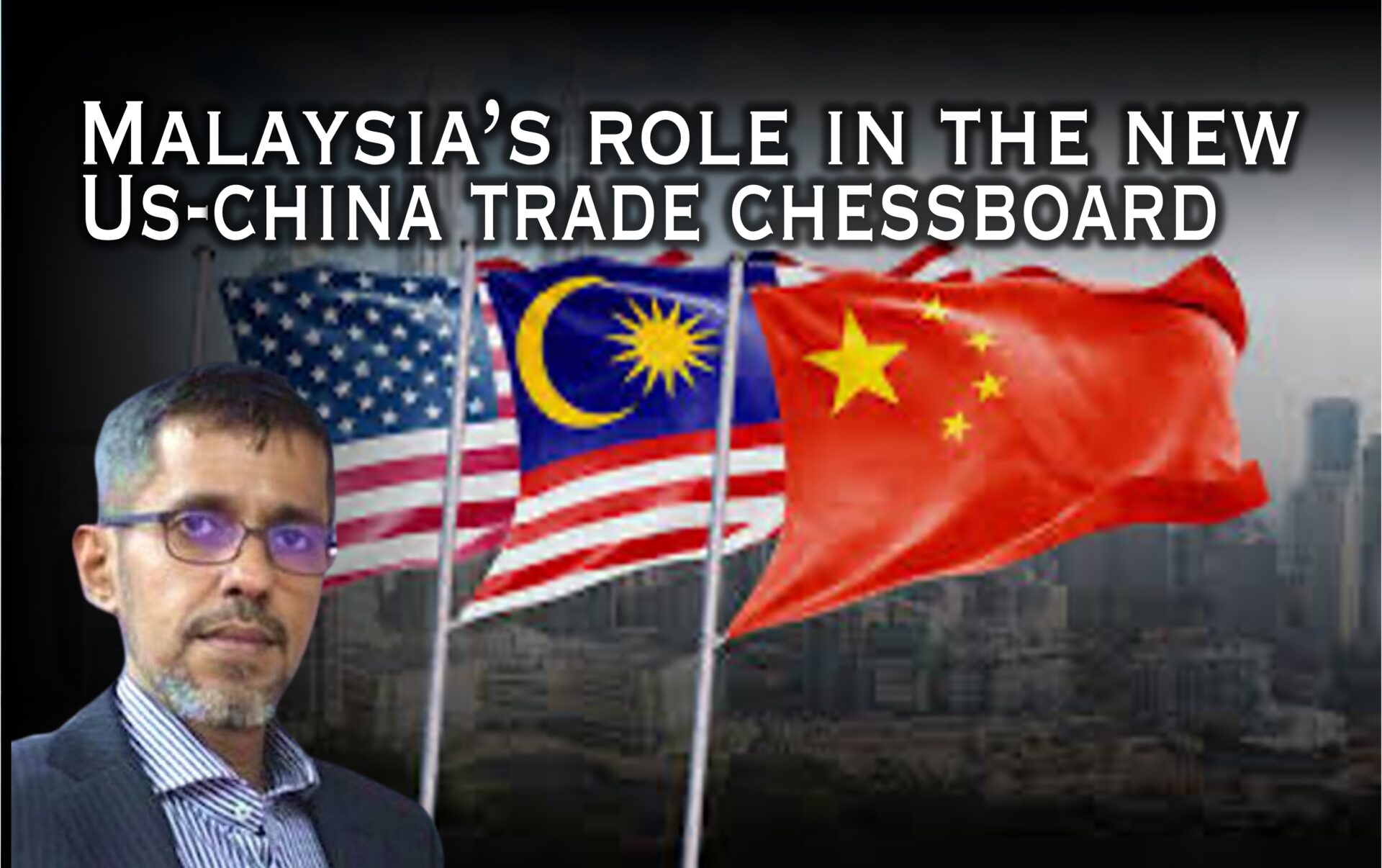
On April 9, U.S. President Donald Trump imposed 50% tariffs on Chinese goods on top of the 54% already levied as of April 3.
Trump did so after China refused to revoke the retaliatory tariffs it had imposed on U.S. products.
The biggest loser then—and still—is China, whose $300 billion-odd trade surplus with the U.S. remains its Achilles’ heel.
As America’s top geopolitical adversary, China has openly made hostile statements toward the U.S. and engaged in questionable trade practices that have undermined American manufacturing.
Trump is aiming to plug deficit leaks, and China tops the list of countries with significant surpluses built at the expense of the American economy and its businesses.
Following World War II, it made sense for the U.S. to support then underdeveloped and developing economies—including China—by offering tariff-free access to American markets.
There were several reasons for this, including the need to contain communism and Soviet influence through trade policies that encouraged capitalist development in these regions.
Another rationale was that prosperous developing nations would foster a growing global middle class, thereby supporting U.S. manufacturing and creating export demand.
This approach also deepened global reliance on the U.S. dollar and cemented its dominance in international trade and negotiations.
However, this policy no longer serves American interests.
As the economies of developing countries prospered, American companies shifted production overseas, hoping to tap into rising middle-class populations and take advantage of lower operational costs.
This migration of industries fuelled growth abroad, but the benefits were not always reciprocal.
Countries like China and Vietnam imposed steep tariffs on American goods, thereby deepening the US trade deficit and swelling national debt.
Meanwhile, cheaper imports from these very countries, driven by tariff-free access and low labor costs, undercut US manufacturers, eroding both the value and demand for domestic products.
The result was a shrinking job market and pay scales that no longer aligned with economic realities.
China has also attempted to weaken the U.S. dollar’s global dominance by backing the BRICS initiative.
Trump is seeking to undo all this by dismantling the globalist-elitist grip on the world’s economic controls.
In an effort to rebalance trade, he is imposing tariffs on every country that levies direct or indirect tariffs on U.S. goods— albeit at a discounted rate.
The purpose of the discount is to present space for negotiations, and already, 70 countries are queuing up to negotiate free or near-free trade deals with the U.S., including Vietnam, which is seeking a “zero-zero” tariff agreement.
China, however, remains entrenched in a “fight to the end” stance, as any concession to Trump would be politically disastrous for President Xi Jinping.
Xi is now boxed in by his own hardline stance, while Trump holds a full deck of cards to play.
A logical move for Xi would be to reach out to trusted trade partners in Southeast Asia—chiefly, Malaysia.
It is a known fact that Malaysia is famous for its ports and strategic location which undeniably attracts investors through import and export activities.
It was reported back in 2021 that Port Klang operated efficiently by dealing with an average of 131 ships weekly and taking just 1.7 days to service each vessel which was considered a quick handling rate during the pandemic.
This efficiency, combined with Malaysia’s central location, has made it an ideal stopover for transshipment—a practice increasingly entangled in trade disputes, tariffs, and legal concerns.
It would in turn not be a surprise then why Malaysia has been an ideal location for transshipping activities—a practice easily tangled in trade disputes, tariffs, and legal concerns.
Transshipment generally refers to goods arriving in Malaysia—regardless of mode of transport—being temporarily stored in customs or licensed warehouses before being shipped to another destination.
It is entirely conceivable that Malaysia, among its Southeast Asian neighbors, could have been flagged by the U.S. as a potential hub for tariff circumvention involving Chinese exports.
This could have been factored into the 24 percent tariff that was imposed on Malaysia, though that is something for the Government of Malaysia to ascertain through discussions with the US.
Notwithstanding, it is a fact that some companies worldwide use transshipment as a method to avoid high tariffs being imposed.
A report by https://www.managementstudyguide.com/companies-are… claims Chinese goods that are intended to be exported to the US would be delivered to countries like Malaysia first before being transshipped to the US.
Even if true, transshipment is generally legal. It only becomes illegal when the true country of origin is intentionally concealed from the receiving country.
In industries like steel and aluminum, some companies reportedly send semi-processed goods to countries like Malaysia, where they undergo minimal processing before being shipped to the U.S.
However, this minimal processing does not qualify the products as “Made in Malaysia.”
To receive this designation, companies must meet specific requirements:
(i) The said company has to be registered under Companies Commission of Malaysia or other registered bodies;
(ii) The company must hold a current PBT (local authority) operating license;
(iii) The company must also possess a license of manufacturing (only if applicable);
(iv) The goods produced by the company must be involved in some sort of manufacturing process (for manufacturing activity);
(v) The goods or product must be made or manufactured in Malaysia and have at least 51% local or substance content; and
(vi) The said company (applicant) is urged to apply to the Malaysian Intellectual Property Corporation for registration of its intellectual property (IP).
Additionally, the company must produce a Certificate of Origin, which verifies where the products were made, assembled, or processed.
To qualify, manufacturers, exporters, or merchants must be SSM-registered and ensure the products meet one of the following:
1. 100% locally produced or manufactured in Malaysia;
2. Processed in a way that alters the product’s tariff code at the six-digit level; or
3. Composed of at least 25% locally produced materials.
Given these requirements, Xi is more than likely to reach out to the Government of Malaysia and look into ways to establish China funded joint-venture initiatives that involve manufacturing of Chinese goods in Malaysia meeting the above requirements.
If handled properly, such initiatives could significantly benefit Malaysia’s economy in the long run—especially as the U.S. keeps a close eye on Southeast Asian transshipment patterns and any attempts to evade its tariffs.



